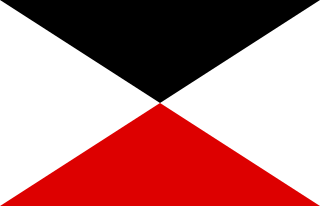
Fritz Theodor Carl von Below was a Prussian general in the German Army during the First World War. He commanded troops during the Battle of the Somme, the Second Battle of the Aisne, and the German spring offensive in 1918.

Otto Ernst Vinzent Leo von Below served as a Prussian general officer in the Imperial German Army during the First World War (1914–1918). He arguably became most notable for his command, along with the Austro-Hungarian commander Svetozar Borojević, during the victorious Battle of Caporetto in October–November 1917.

The XX Army Corps / XX AK was a corps level command of the German Army before and during World War I.

The I Army Corps / I AK was a corps level command of the Prussian and then the Imperial German Armies from the 19th Century to World War I.

The Army of the Niemen was an army level command of the German Army in World War I.

The 1st Army was an army level command of the German Army in World War I. It was formed on mobilization in August 1914 from the VIII Army Inspectorate. The army was dissolved on 17 September 1915, but reformed on 19 July 1916 during the Battle of the Somme. It was finally disbanded in 1919 during demobilization after the war.

The 3rd Army was an army level command of the German Army in World War I. It was formed on mobilization in August 1914 seemingly from the II Army Inspectorate. The army was disbanded in 1919 during demobilization after the war.

The 7th Army was an army level command of the German Army in World War I. It was formed on mobilization in August 1914 from the II Army Inspection. The army was disbanded in 1919 during demobilization after the war.

The 6th Army was an army level command of the German Army in World War I. It was formed on mobilization in August 1914 from the IV Army Inspectorate. The army was disbanded in 1919 during demobilization after the war.

The 9th Army was an army level command of the German Army in World War I. It was formed in September 1914 in Breslau to command troops on the southern sector of the Eastern Front. The army was dissolved on 30 July 1916, but reformed in Transylvania on 6 September 1916 for the Romanian Campaign. It was transferred to the Western Front on 19 June 1918 where it was finally dissolved on 18 September 1918.

The 11th Army was an army level command of the German Army in World War I. It was formed in March 1915 in Kassel originally to serve on the Western Front but was transported to Galicia for service on the Eastern Front. The army was dissolved on 8 September 1915, but reformed on 23 September 1915 for the Serbian Campaign. It was finally dissolved on 7 January 1919.

The 12th Army was an army level command of the German Army in World War I formed in August 1915 by the redesignation of Armee-Gruppe Gallwitz. It served exclusively on the Eastern Front and was dissolved on 9 October 1916 when its commander, General der Infanterie Max von Fabeck, was transferred to 8th Army.

Armee-Abteilung Scholtz / Armee-Abteilung D was an army level command of the German Army in World War I. It served on the Eastern Front throughout its existence.

The Army of the Bug was an army level command of the German Army in World War I named for the Bug River. It was formed against Russia on 8 July 1915 and served exclusively on the Eastern Front. It was dissolved on 31 March 1918.

The South Army was an army level command of the German Army in World War I. It was formed on 11 January 1915 to fight against Russia and served exclusively on the Eastern Front. It was dissolved on 25 January 1918.

Armee-Abteilung Gronau was an army level command of the German Army in World War I. It was formed from Armee-Gruppe Gronau on 18 September 1916 and was disbanded on 27 March 1918. It served on the Eastern Front throughout its existence.

The XXXIX Reserve Corps was a corps level command of the German Army in World War I.

The Guards Reserve Corps was a corps level command of the German Army in World War I.

The North Army was an army level command of the German Army that existed briefly at the outbreak of World War I.

The XVII Army Corps / XVII AK was a corps level command of the German Army before and during World War I.








